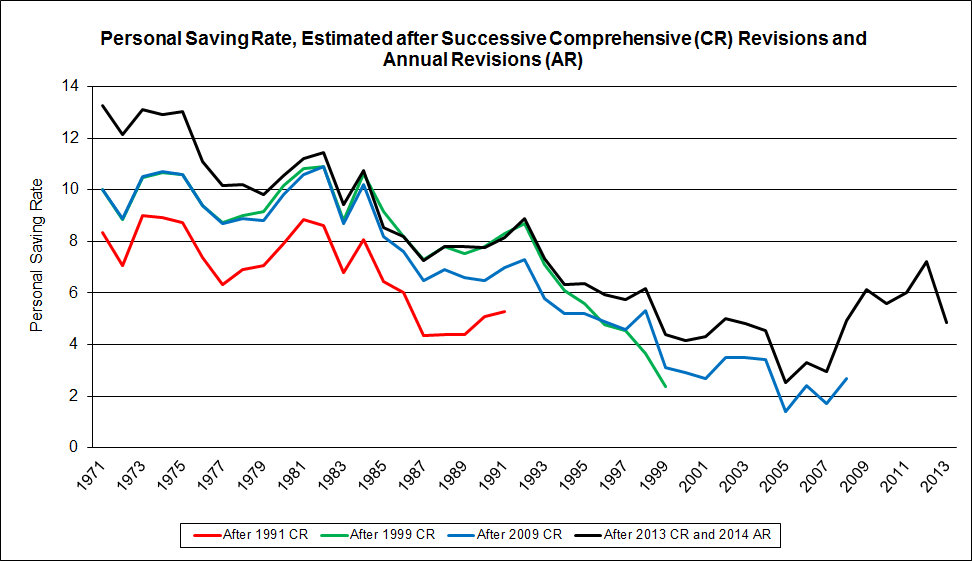BEA estimates personal saving as the difference between current-dollar disposable personal income and personal outlays in the NIPAs. Revisions to either of these components will impact personal saving and the personal saving rate (which is derived as personal saving as a percentage of disposable personal income).
BEA updates the national income and product accounts (NIPAs), including the personal saving rate, on a regular revision schedule to incorporate new and revised source data, improved estimation methods, and changes in definitions and concepts, all of which improve the accuracy and relevance of the NIPAs.
Initial quarterly estimates are first published as part of the "advance" quarterly GDP release approximately one month after the end of a quarter; these estimates are revised during the subsequent “second” and “third” quarterly releases. In addition, as part of the “second” quarterly GDP release, BEA also updates the previous quarter’s estimates of personal income, of disposable personal income, of personal saving, and of the personal saving rate to incorporate newly available preliminary tabulations from the Bureau of Labor Statistics quarterly census of employment and wages. BEA also conducts annual revisions each July, and comprehensive revisions about every 5 years, in order to incorporate newly available source data and implement major improvements.
While BEA has revised its estimate of the personal saving rate over these revision cycles, long-term trends in the personal saving rate over the past 50 years have remained in the data (see chart). As the chart shows, successive comprehensive revisions (CRs) have generally resulted in upward revisions to the level of the personal saving rate, but the rate has consistently shown a downward trend through the mid-2000s and an upward trend since 2008. 1
Over the decades, revisions to the personal saving rate have reflected many improvements to estimation methods, including the treatment of government employee retirement plans (1999 CR), revised estimates of income misreporting and new information on employee cafeteria plans (2009 CR), and the adoption of accrual-based accounting methods for defined benefit pension plans (2013 CR) as well as the incorporation of regularly scheduled source data, such as corporate and proprietorship income tax return data that are available with a one-to two-year lag. 2

1 Each line on the chart shows the time series of personal saving as a percentage of disposable personal income as published at the time of the specified revision, using consistent definitions and estimation methods.
2 More information on the improvements made to the estimation methods of components of the personal saving rate were published in the Survey of Current Business articles that typically appeared in September of the comprehensive revision year.